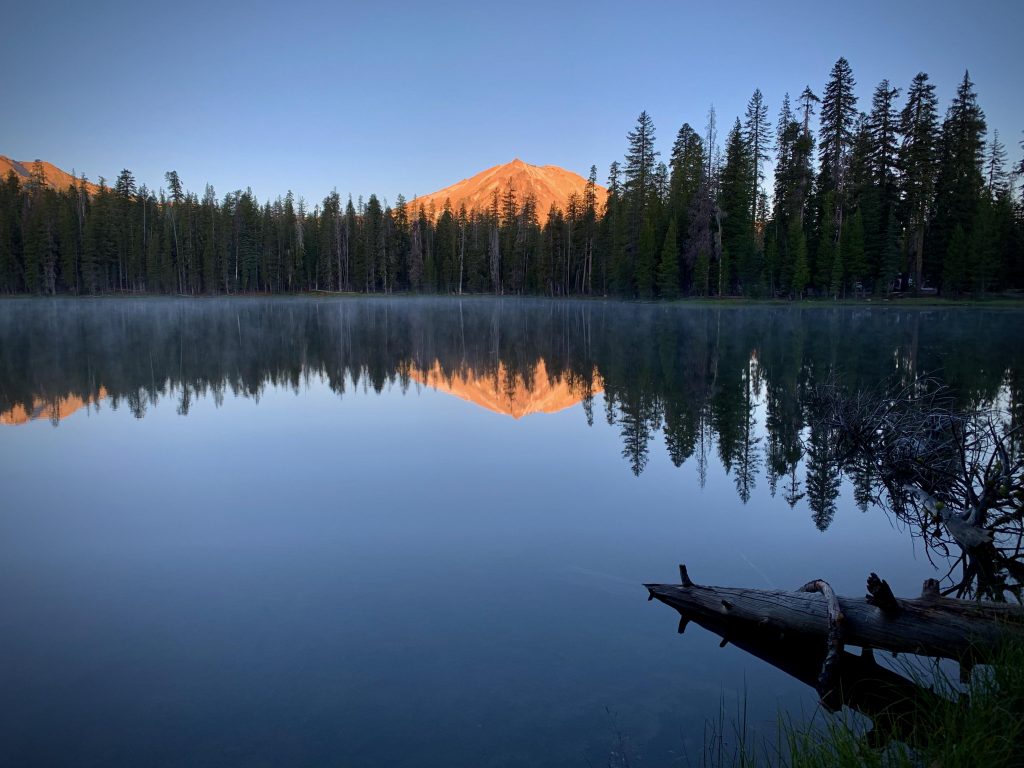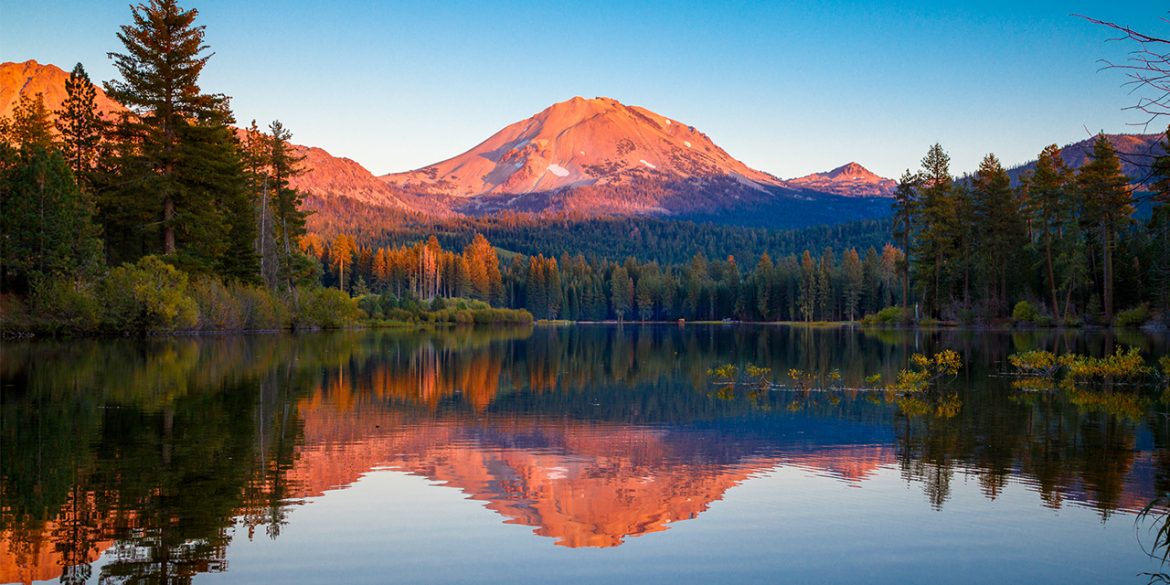On one of the last days of the year before winter set in in the mountains, I drove up to Lassen Volcanic National Park, the entrance of which is only about an hour and a half from here. Lassen is the least visited national park in America, and is spectacular beyond description.
It was an amazing thing to go from early autumn at sea level, through full autumn at mid-elevation, and finally, at the pass (at 8500 feet/2600 meters), early winter.
The feeling of wildness at the top, at about 8500 feet, is intense, cleansing and joyous. I was able to sit for an hour at Summit Lake on the other side of the pass, at about 7000 feet. As the leading edge of a storm rolled in, the wind howled through the pines, with birdcalls occasionally rising above the noise.

Wavelets lapped the shore as I gazed across the small lake upon one of the many minor peaks in the park, any one of which would tower over the highest mountains in the east. The essence of one’s meditation practice is this: Opening all the senses in nature and watching the movement of thought/emotion without division.
When I was just 17, the direction of my life radically changed when one’s contemplative and philosophical proclivities converged in the question, asked over a period of weeks: What is this observer that always seems to be separate from what it is observing, even in oneself? The insistent question apparently percolated within me, and exploded into insight one day. it forms the basis of one’s meditation to this day, more than half a century later.
What is that insight? That the observer is a primal, continually generated illusion of thought, the very wellspring of psychological separativeness within the individual and man, preventing direct perception, insight and love. In Christian terms, the separate observer is the “original sin.” But it took years to form these words for it, since the phenomenon preceded the philosophy.
When there is the deep, wordless insight that the observer is inseparable from the movement of thought that it purports to observe, a completely different quality of observation occurs—an observing without the observer, without division and the infinite regression of the self.
Back in the valley and the canyon beyond town the next day, the creek was audible about a couple hundred meters upstream, but the current could barely be heard directly in front of where I sat. A chainsaw bites through wood in directly across the stream. It only lasts a second or two, and then stops. A couple minutes later, it happens again, exactly the same way, and fortunately, that’s the last I hear it.
It was overcast, with the kind of clouds that reflect and intensify light and sound. Jays squawked, and other birds chirped. A crow cawed, and in the distance, a hawk’s cry pierced the air.
Our individual consciousness is as inseparable from collective consciousness as eddies are from a river. In a dead culture such as this, meditation is not a luxury, but a matter of inward survival. Even in an intact culture, a person cannot grow into a human being without space and silence for observation and reflection. Continuous reaction is the way of machines, which most people seem content to become.
Methods, techniques, rituals and habituated practices are antithetical to awakening meditation because all these things are born of thought, and thought cannot be used to quiet thought.

Sound is the best teacher of meditation, because we don’t direct our hearing as we do our sight, and if one really listens, without judging or even naming, the mind naturally grows quiet as attention effortlessly gathers in the brain.
Through fully and undividedly attending to the movement of thought/emotion in methodless meditation, the chattering mind ends. Then one leaves the valley of suffering, and enters into the vastness of the cosmic mind.
Human beings are not meant to be encrusted accretions of experience and knowledge, but windows for the sublime and sacred. Why then are we the former rather than the latter?
Martin LeFevre

